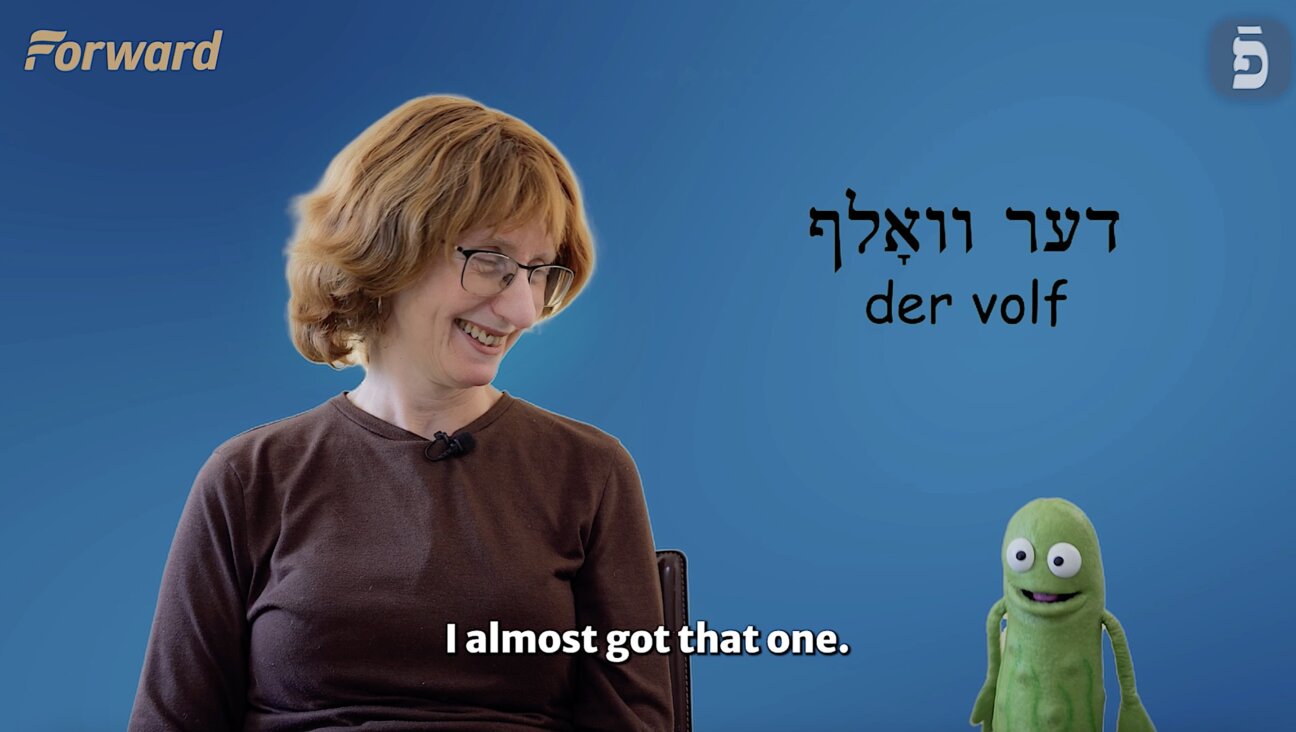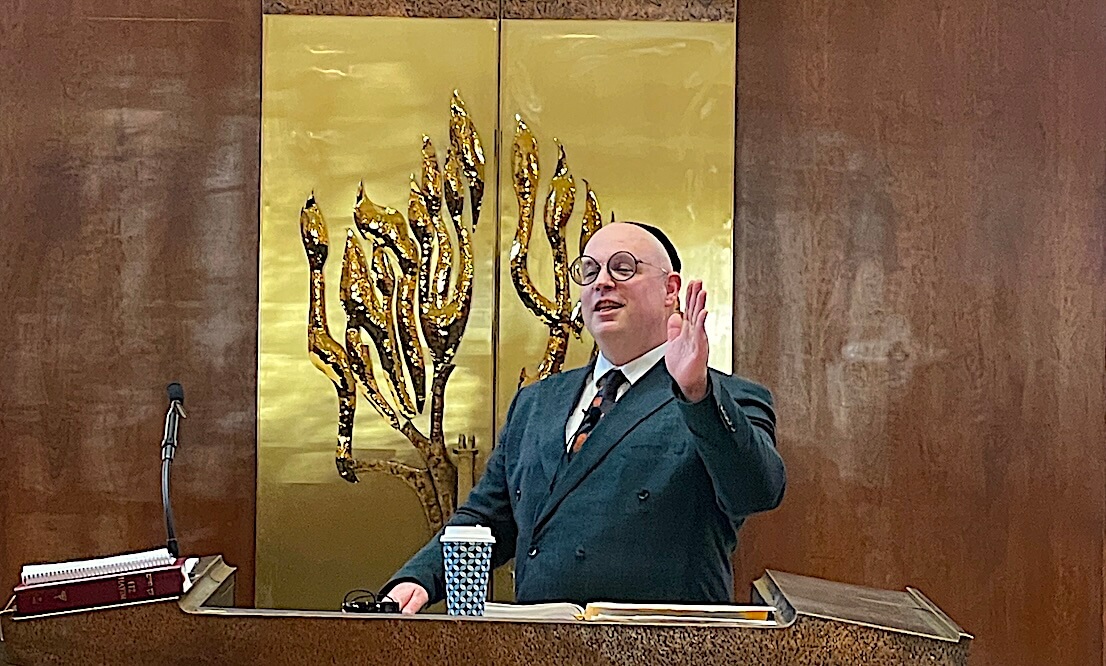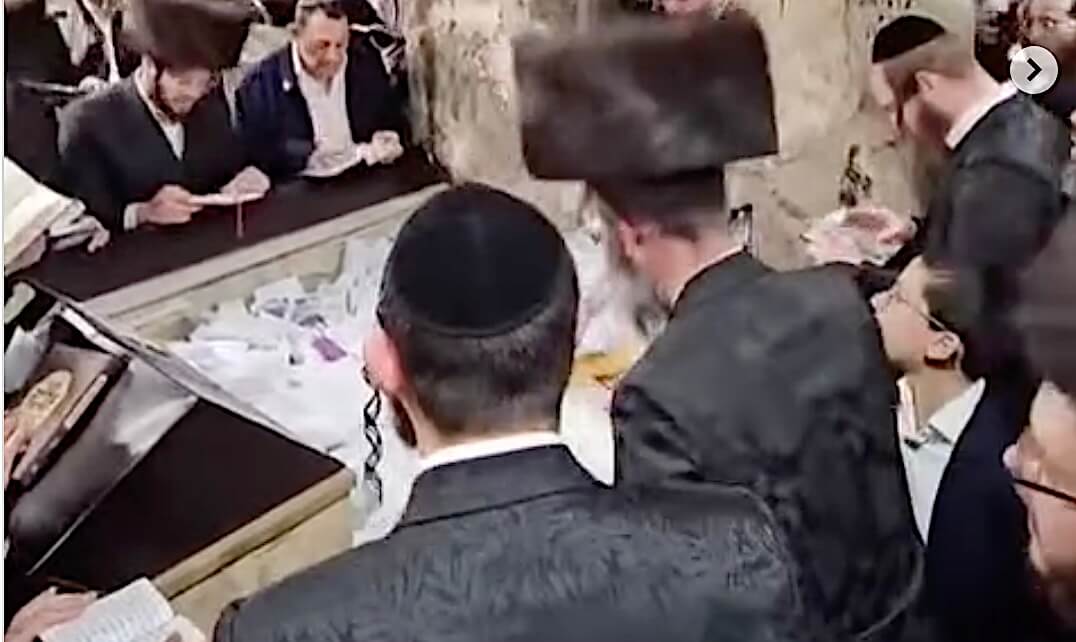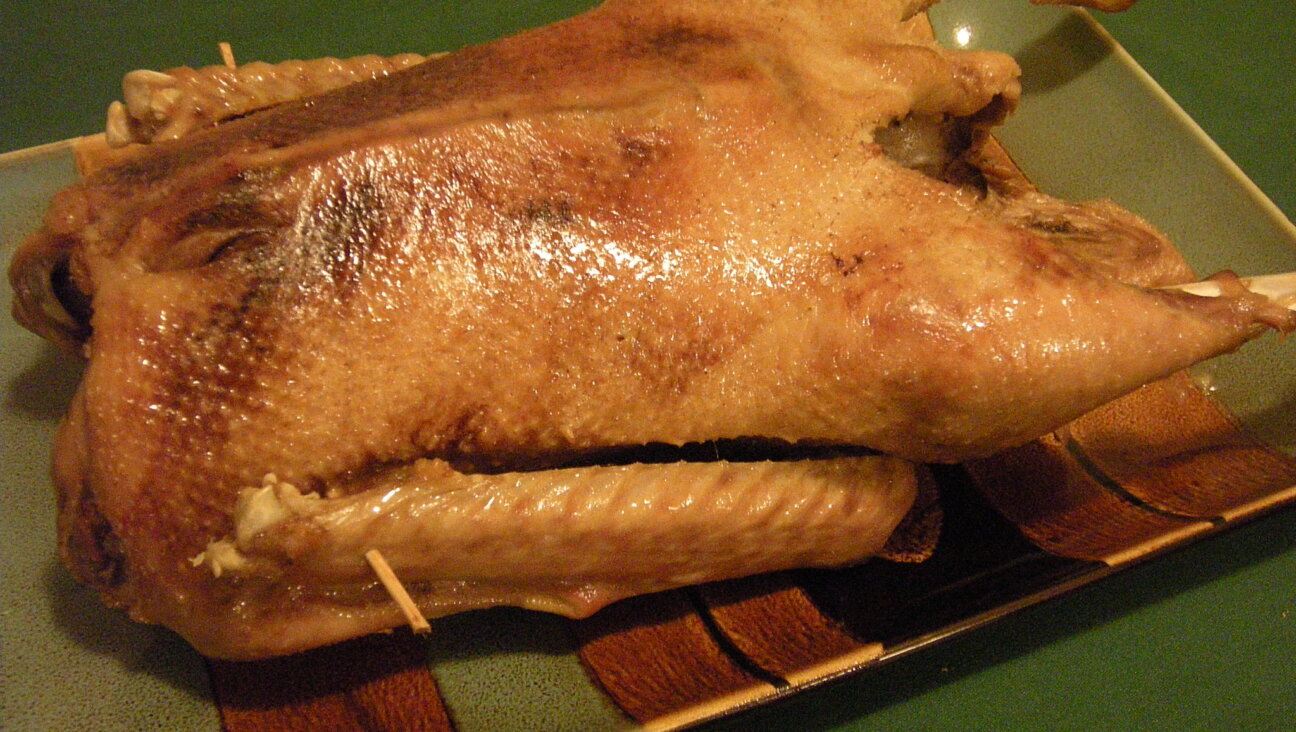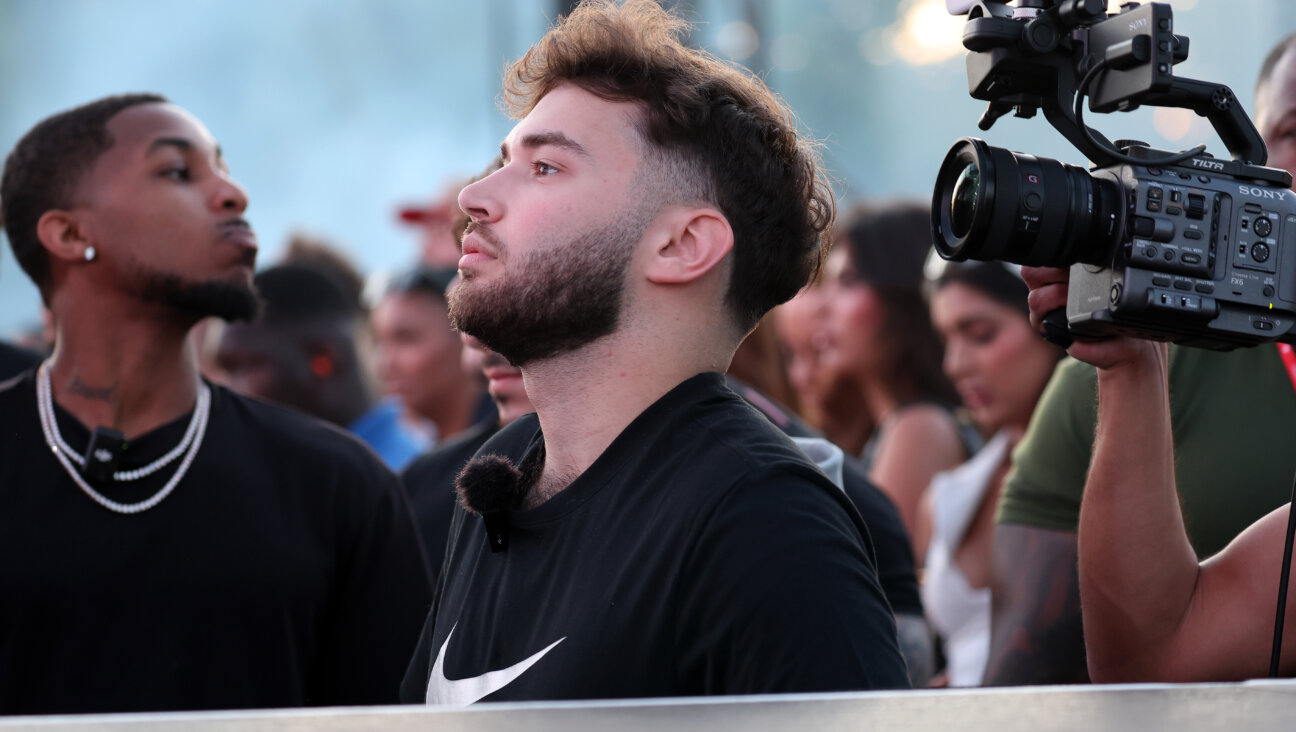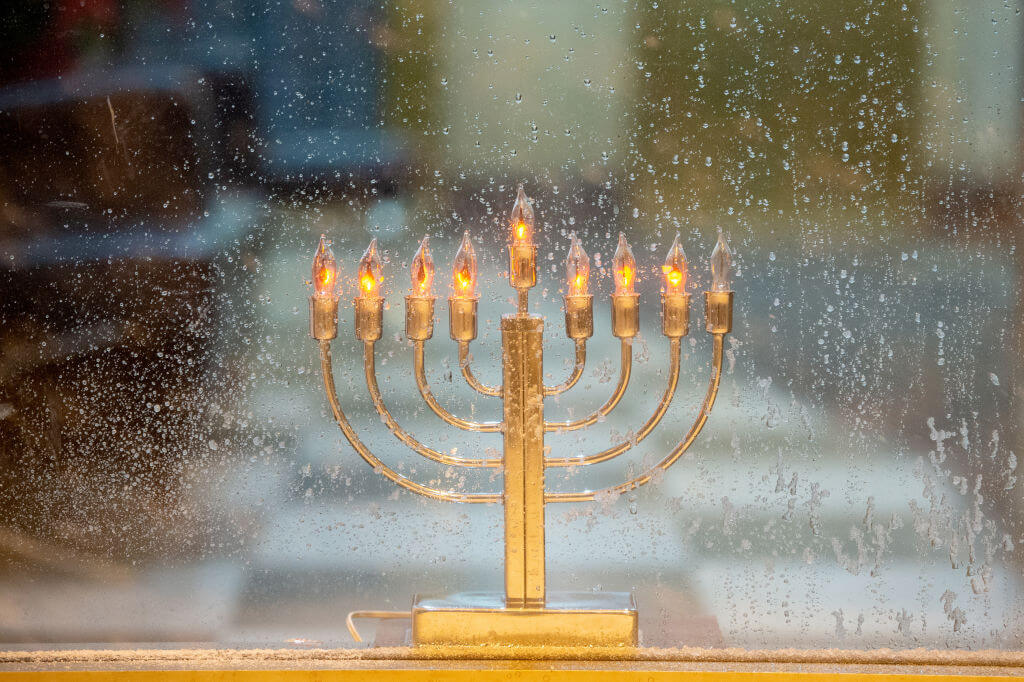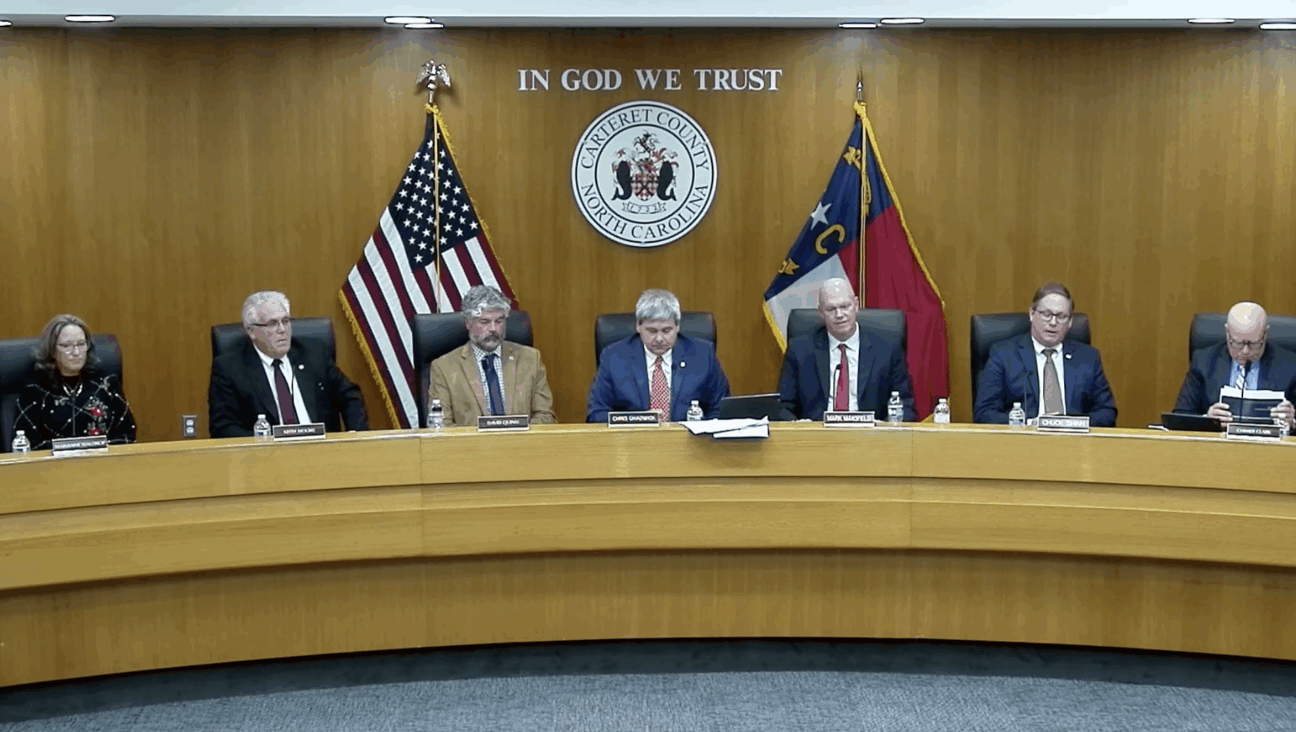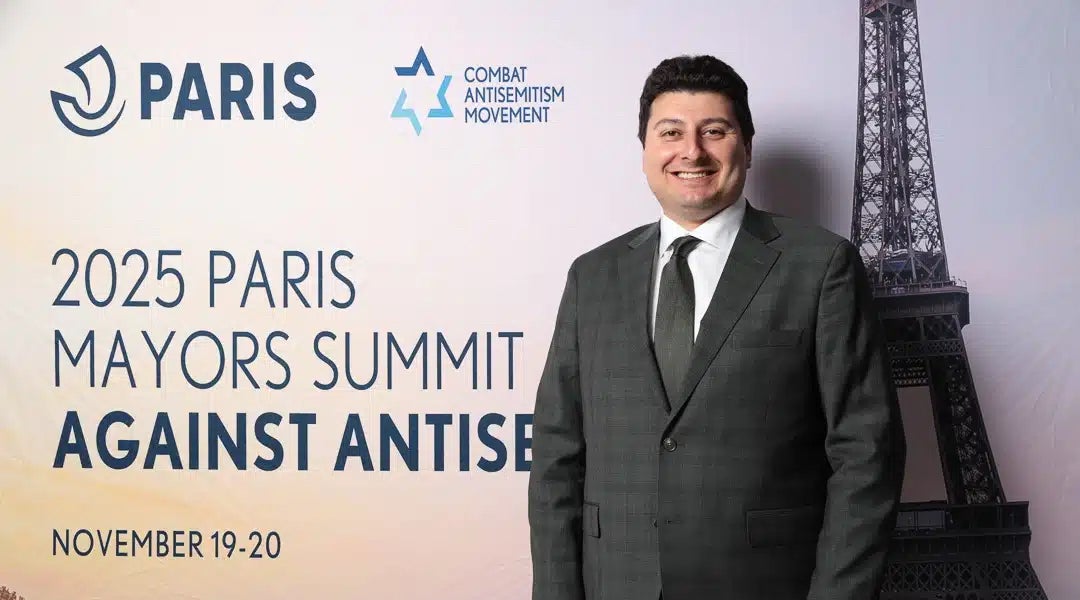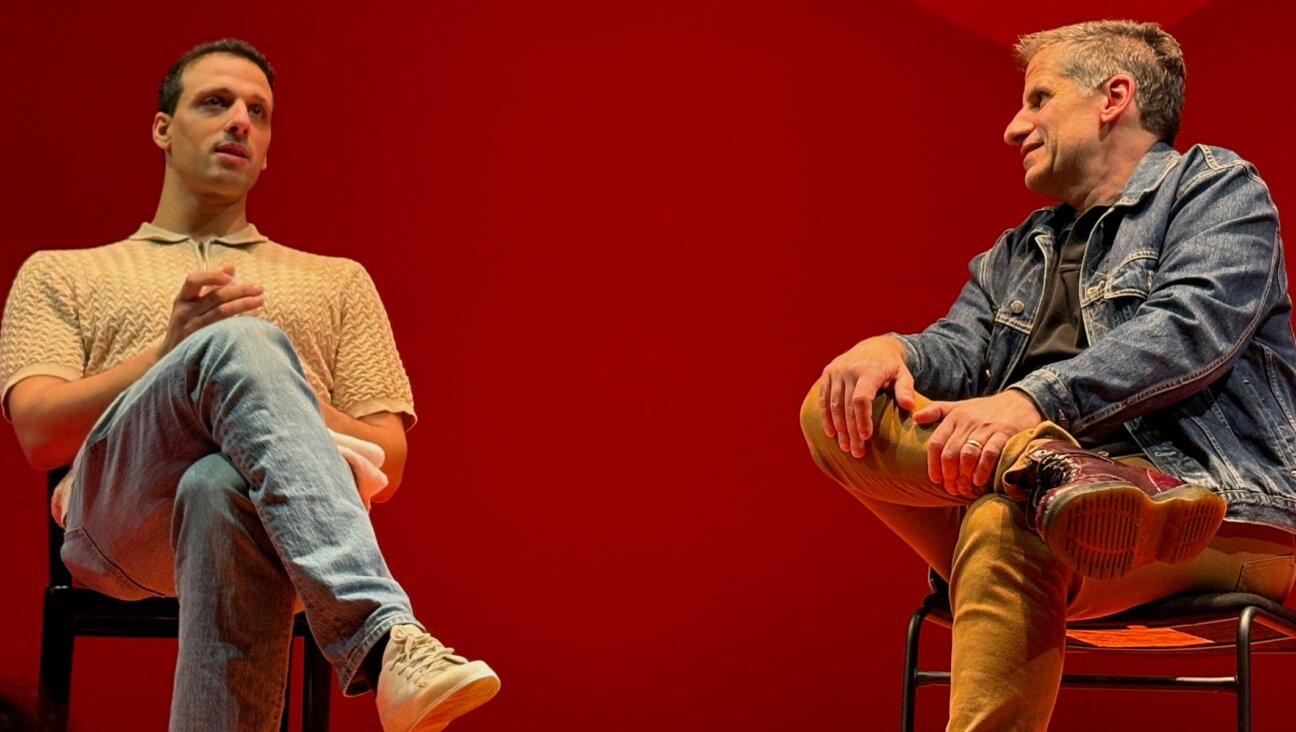Venice’s international arts festival gets unexpected taste of Yiddish
The “Yiddishland Pavilion” aims to validate minority cultures at an event that highlights nation-based narratives
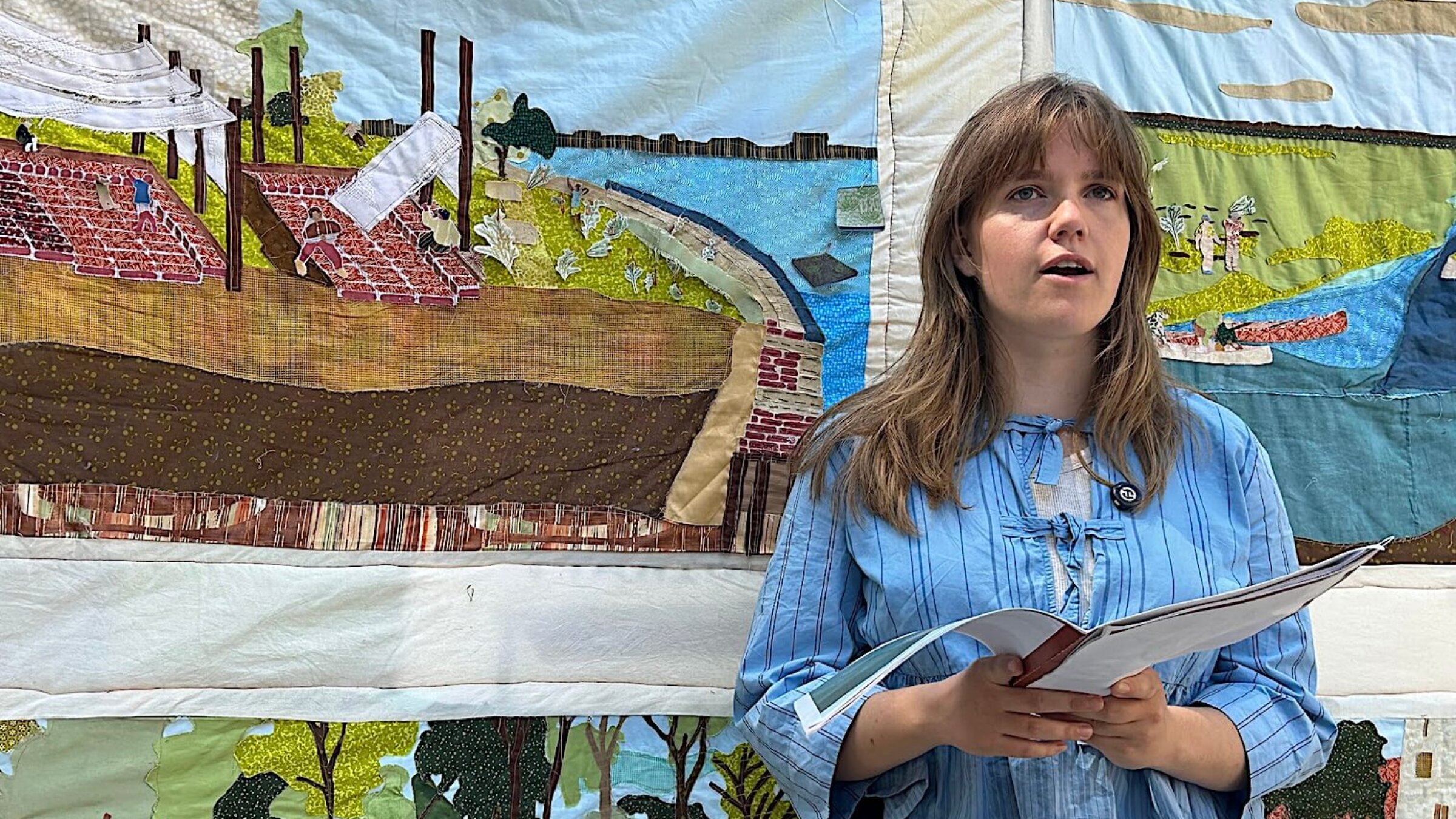
Julia Hedges performs her and G Laster’s project “Camp Doikeit” in the Venetian Ghetto on May 11th, 2025 Courtesy of the artists and Yiddishland Pavilion
Yiddish culture is making its mark at the 2025 Venice Biennale in Venice, Italy — probably the most prestigious international arts festival in the world.
Yiddish plays no official role at the Biennale. But curator Maria Veits and conceptual artist Yevgeniy Fiks decided to create the “Yiddishland Pavilion,” a series of outdoor performances that draw visitors’ attention to Yiddish culture — both as a form of Jewish identity and a vehicle for contemporary artistic expression. A version of the Yiddishland Pavilion debuted at the 2022 Venice Biennale, and now it’s back for more.
These performances, which take place in the streets around the festival and throughout the city, are intended to provoke and challenge. The main event at the Biennale is an exhibition organized by nations, which automatically excludes a language-based culture like Yiddish, which has never been the official language of any nation. Yiddishland Pavilion aims to disrupt this nation-based narrative, in order to promote and validate the contributions of minority cultures.
The first Yiddishland Pavilion performances took place in May 2025, when the Biennale opened. They were a hit. Intrigued visitors stopped the performers to ask questions and take photos. If funding allows, more events will take place in the autumn before the Biennale closes in November.
Alongside these performances and displays, the organizers hope to present the world’s first Yiddish-language symposium on transnational architecture.
I spoke with Veits and Fiks about the Yiddishland Pavilion so far and their plans for the fall. Our conversation has been edited for length and clarity.
Why is the Biennale’s main exhibition organized by nations, and how does that work?
Veits: The Biennale was founded in 1895 as an exhibition of European visual art. It’s grown into a huge multi-national celebration of all the arts, including music, dance, theater and film. But the core event is still the visual arts exhibition, which has been organized by nations ever since 1895. It’s like the Olympic Games, which is similarly organized by national groups or teams. In fact, the modern Olympics were revived in 1896, just a year later than the first Biennale. Both were part of a late 19th-century culture of nations and nationalism.
This year, 66 countries from all over the globe are participating. Each nation gets a pavilion, a physical structure where artists from that nation display their work.
What does “Yiddishland” mean?
Fiks: The idea of “Yiddishland” goes back at least to the early 20th century, when some Yiddish-speaking Jews were thinking about language and culture as alternatives to nation-based identity. After all, nation-states in Eastern Europe had a history of marginalizing and discriminating against their Jewish populations. Even when Yiddish-speakers started migrating to other countries in the late 19th century, they weren’t necessarily welcome there. “Yiddishland” is the idea that Yiddish language and culture create their own homeland — an imaginary place where Yiddish-speakers always belong. No matter where their physical bodies go or live, their hearts and minds still live in Yiddishland.
Why do you use the word “pavilion” to describe Yiddishland’s performances and public events?
Veits: We intend it both ironically and seriously. Official nations are given physical pavilions to display their work, as I mentioned above. Yiddishland’s “pavilion” isn’t a physical space. We’re asking why a non-physical space representing an imaginary nation isn’t just as valid as the brick-and-mortar pavilions that the Biennale gives to official countries. It also makes sense for a portable and conceptual “nation” to have a portable and conceptual “pavilion.” Yiddishland’s pavilion is just like Yiddishland itself — built from ideas.
What were the recent Yiddishland street performances like?
Veits: This year’s Yiddishland Pavilion, like the Biennale’s core exhibition itself, is themed around architecture. The core exhibition alternates in different years between the kind of art you might see in a museum or gallery (painting, sculpture, installation art and more) and projects related to architecture and design. This year is an Architecture Biennale, so we wanted to meet that head-on. It was an interesting challenge for the Yiddishland Pavilion, because “architecture” suggests ideas like permanence, monumentality and rootedness in the landscape. In other words, the very ideas that the Yiddishland Pavilion is reacting against.
That’s why we decided to think about “architecture” through the lens of doikeit. Doikeit is a Yiddish word; the best English equivalent is “hereness” (do means “here”). Historically, it’s an idea promoted by the Jewish Labor Bund. The Bund wanted Jews to live fully Jewish lives wherever they happened to be in the diaspora — to adapt to life in the “here and now” without losing Jewish identity through assimilation.
Doikeit suggests fluidity, multiple identities, a talent for rolling with the punches, for adapting to circumstances while holding tight to your Jewish identity and living in solidarity with neighbors and other communities around you. Doikeit is Yiddishland in action — leading a meaningful life in the diaspora while also living spiritually in Yiddishland. So we asked ourselves, what does an architecture of doikeit, an architecture of Yiddishland, look like?
Fiks: One interpretation was Vegele fun Doikeit, or Hereness Wagon, created and performed by Daniel Toretsky. The Vegele was a kind of lightweight scaffold with many different parts that Toretsky assembled from scratch each time. He carried the pieces around in a rolling suitcase (that’s the vegele), a symbol of mobility and adaptability. When he performed, he opened up the suitcase and built the structure in the street. The Vegele used painted cutout figures from Jewish mythology and history — the Golem, the Bund’s logo, an image of a shtetl. It plays music, too, in a contemporary techno-klezmer style.
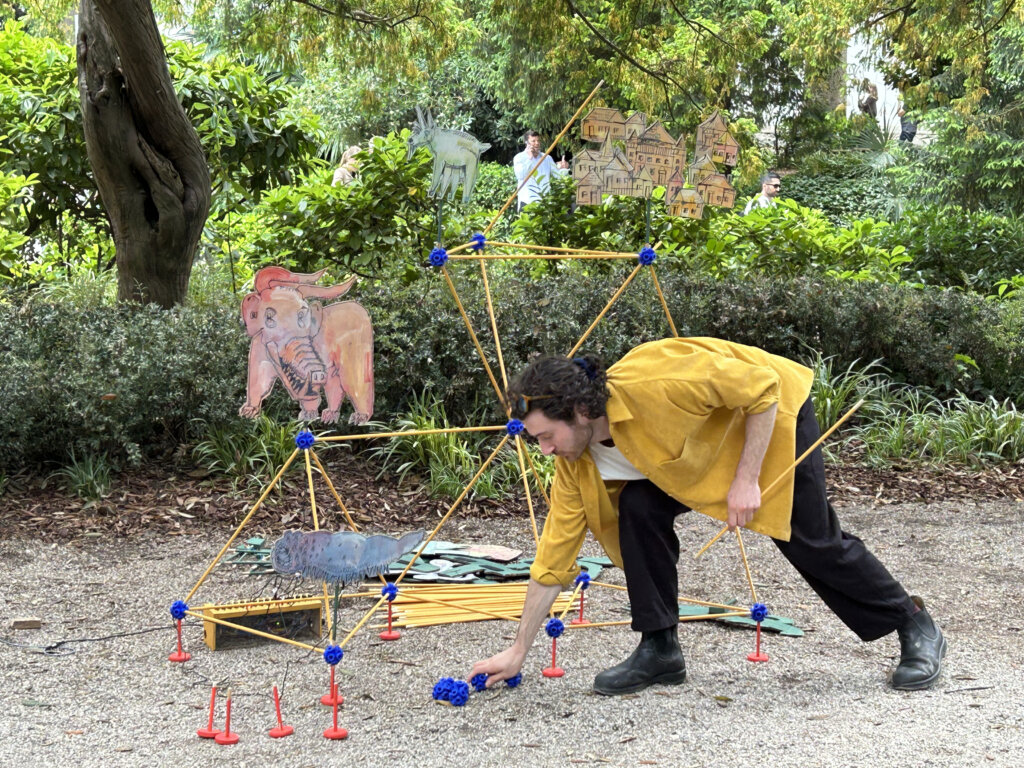
Veits: Another project was Camp Doikeit, by Julia Hedges and G Laster. The word “camp” evoked American Yiddish-language summer camps, where children strengthened their American and Jewish identities while exploring nature. In Venice, the performers marched in the streets carrying a large double-sided tapestry. The imagery on both sides showed an imaginary Jewish summer camp in Venice, with campers setting up a portable base in the city’s earliest Jewish neighborhood and caring for the lagoon around the city.
The third project was The Wandering Pavilion, by Constantin Boym. The performer (Claudia Casagrande) wore a large placard on her body and walked around in it. The placard had images of Yiddishland Pavilion events on the front and back, and the word “Yiddishland” in Yiddish and English. Parts of the costume were reflective, mirroring the surrounding architecture of Venice. The performer became living architecture, a walking pavilion that inverted the negative stereotype of the Wandering Jew, turning mobility and portability into strengths.
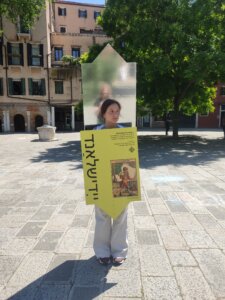
What do you plan for the Yiddishland Pavilion in the fall?
Fiks: Everything depends on funding. One potential project is The Castle of Yiddishland, by Anna Kamyshan, imagining traditional Eastern European wooden synagogue architecture in a Venetian context, and also The Yiddishland Sukkah Pavilion by Sala-Manca. They’ll build a Sukkah in the neighborhood of Venice’s former Jewish Ghetto, using materials salvaged from around the city. If all goes well, the Yiddish-language symposium about transnational architecture will take place inside the Sukkah, a symbol of adaptability and portable Jewish identity.
Veits and Fiks are hoping people will donate to the Yiddishland Pavilion to keep it going. To do so, click here.
